Feminine Fortitude in India's Freedom Struggle: The Overlooked Women Heroes of Jammu Kashmir
| 14-Mar-2023 |
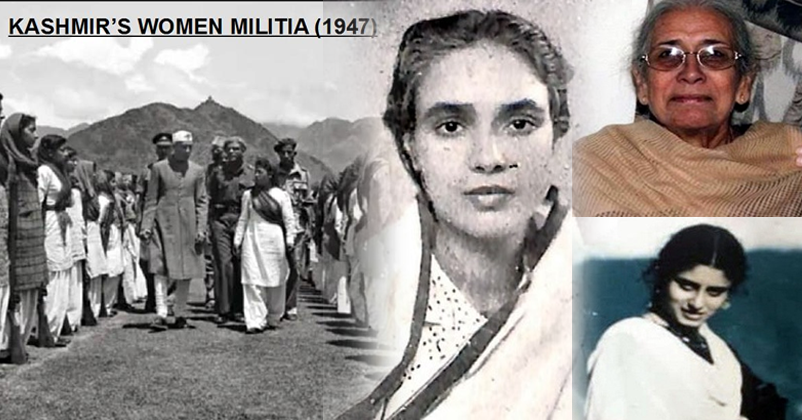
On 8th March we celebrated the auspicious festival of Holi plus also the revered occasion of women’s day and what a coincidence that both of them were on the same day, one teaches us to burn the evil while the other focuses more on being equal, independent and ahead of its time. We all celebrate the sacrifice that our soldiers do so that we can read, write, act, and protest but somewhere down the line India is also blessed to have civilians like Krishna Misri, Kanta Wazir, Krishna Mehta, Shalo Singh, who though not related to armed force in any way still decided to work for this country in such a way that they burned the evil to the ground while being a true leader and took the charge of the situation and honestly if they weren’t there when they were there India could have been a lot different and I guess the aforementioned sentence will tell you how important they were and how lucky we are to have them. So here goes the list of the Unsung heroes that we celebrate in this article-
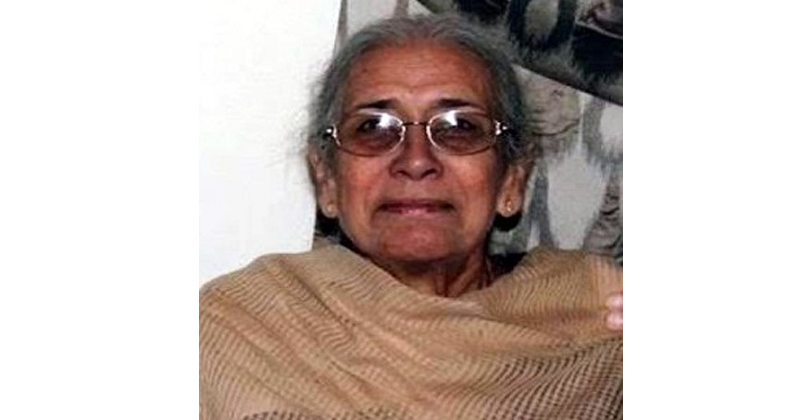
1. Krishna Misri (Srinagar)
Krishna Misri was born in 1933, in Srinagar and was brought up in the family of V.D. Zadoo. It was in October 1947, when she was at the tender age of 14 years that the well conspired ‘Operation Gulmarg’ was initiated by Pakistan on 22nd October 1947, to invade Indian territories of Jammu Kashmir. The vivacious atrocities perpetrated in the frontiers regions and the reports of which were arriving from the towns and villages ravaged by the Pakistani army created panic among the people in the capital Srinagar.
The paralyzed civil and administrative machinery and extremely weak defense arrangements of the state army had made the city of Srinagar vulnerable. The emerging critical situation created an intense urgency to organize some sort of civil defense of Srinagar which culminated in the formation of the Salamati Fauj (Security Force) or National Militia- a quasi-military outfit raised.
The creation of a national militia, particularly an exclusive women’s wing, was a very unique rather bold response of the Kashmiri community, who, barring the Kashmiri Sikhs, had no martial leanings. The protection and safeguard of women’s honor became the immediate priority of the militia. Soon after its formation, the militia started recruiting volunteers to defend the city of Srinagar against the advancing Pakistani hordes. For the first time in the history of Kashmir, the girls belonging to both the communities (Hindu and Muslim) were frantically joining the women's militia. One such brave and the fearless girl was Krishna Misri. The saga of the active participation of Krishna Mishri, rather than her entire family, including her sisters and the only brother Pushkar Nath Zadoo, deserves a special mention.
Krishna’s brother Pushkar, a student of Amar Singh College, was one of the leading members of the Peace Brigades of National militia and was deployed at the Teethwal front where he lost his life while in action.
Furthermore, his sisters were in no way less enthusiastic to dedicate their lives to the service of their motherland. It did not take them long to develop a competitive spirit and find a comfort level within the Women’s militia. Infused with an intense feeling of patriotism, the trio- Krishna Mishri- her elder sister Kamla and younger sister Indu, along with other volunteers started getting elementary training in the use of firearms including 303 rifles, sten guns, and pistols. They played an enthusiastic role in almost all the endeavors of the Women militia.
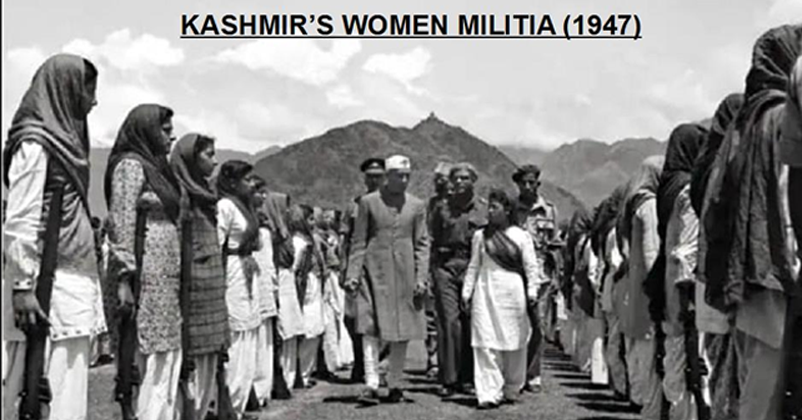
While most of the people, terrified by the advancing shadow of the Pakistani invaders hunkered down in their homes, the bold daughters of Kashmir became all the more active and inspired and motivated many young girls to come out of the four walls of the house and provide volunteer services for the sake of the protection of their motherland. Taking inspiration from Krishna Misri and other volunteers, the women who were otherwise engaged in performing their household duties only, also became active and started adopting self-defense schemes such as storing the bags of powdered chili peppers and large stones to defend themselves from the advancing raiders who were in no way less than hounds.
Chalking out the plans and strategies of women militia, Krishna Misri always remained at the forefront to counter the Pakistani marauders. Due to the total disruption of power supply in Srinagar and unavailability of radio sets or any other means of communication, Misri and her team milled around gathering vital information about the happenings taking place around the city and on the frontiers. Thus, they kept the people of Srinagar informed about the ongoing situations. To provide the locals and the refugees with the essential commodities, the supply of which was totally suspended due to the economic blockade caused by Pakistan, Misri and her teammates would go to different localities. Apart from providing basic humanitarian aid, Misri along with other volunteers, including men and women, boldly marched through the streets of Srinagar thus, restoring the lost confidence of the panic-stricken populace. For this, Peace Brigades and Mohalla Brigades were formed. As an active member of these Brigades, Misri, as well as other volunteers of the women’s militia, took to the streets to defend the bridges, banks, vital entry and exit points of the city, places of strategic importance, and even the houses of their non-Muslim brethren.
She and her team of volunteers were also deployed to provide logistical support to the Indian forces that were unfamiliar with the terrain and with the local language. The popular slogans of the time, resonated in every nook and corner of the city. All the slogans were in Urdu rather than Kashmiri directly pointing at the Pakistanis in a language they would understand.
“Hamlavar Khabardar,
Hum Kashmiri Hain Taiyar”,
Additionally, Krishna Misri and other volunteers of the women militia also undertook enormous social work. They organized themselves into small groups to serve in the refugee camps and the city hospitals and to provide moral support and first aid to the molested, raped, and abducted hapless women who were brought from the areas ravaged by the raiders. The team would also look after the wounded soldiers in the military hospitals. Krishna Mishri along with the women leaders and social workers like Zainab Begum and Begum Akbar Jehan and Freda Bedi undertook the task of rehabilitation of the fleeing and dispossessed refugees.
With a feeling of communal harmony and a spirit to serve her people, Krishna Misri played a significant role in the militia that helped in arresting the sagging morale of the community. Her appeal to the sense of patriotism made everyone ready for self-sacrifice and put a solid brocade of resistance to the advancing hordes. As a veteran of the women's militia, Misri remained an active member of various social and political organizations formed for the welfare of the common masses. As a member of the Citizen’s Council, women’s wing team, she visited Haji peer pass in 1965 which was conquered by the Indian army. Along with other teammates including Ms. Mehmooda Ahmed Ali, Jagat Mohini, Zinab Begum, and Kunti Sawhney she carried out relief and rehabilitation work in Haji peer where Gujjar families particularly women and children were in distress and pathetic condition.
Krishna Misri remained active in various movements and tried to raise social awareness among the otherwise downtrodden and marginalized women of the region. Later, she shifted her sphere of activities in the educational sector and became a noted educationist, serving as a Principal of a Government college for women in Srinagar. The story of her active volunteering for saving lives during a time of intense crisis will endure and inspire generations to come. She worked as a crusader and left behind a memory to remember her with pride.
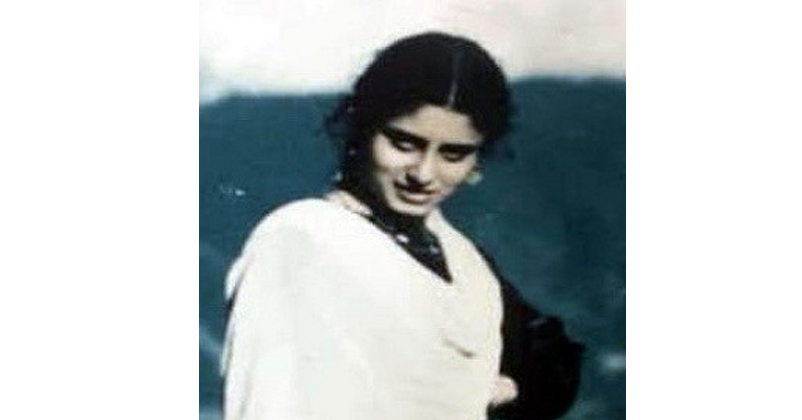
2. Kanta Wazir (Srinagar)
Kanta Wazir was born in Srinagar in March 1930. She was married to Man Mohan Wazir (1926-2018), a Civil Servant of Jammu and Kashmir in July 1949. She was a student of Sri Pratap College, Srinagar. In 1947-48, while pursuing her FA (Fellow of Arts), she was influenced by the progressive ideology and joined the Women’s Self Defense Corps (WSDC), the women’s wing of the National militia that was raised during the turbulent times when Pakistan led tribal raiders invaded Jammu and Kashmir. Equipped with modern weapons and commanded by Major General Akbar Khan of the Pakistan army, the raiders crossed the border and entered Muzaffarabad on 22 October 1947. A reign of terror was let loose on innocent civilians. The Pakistani armymen disguised as tribals advanced leaving behind a trail of death and destruction, their worst orgies were murder, rape, loot, and arson in which women suffered on an unprecedented scale.
The worst fear more than getting killed was about the honour of women. In the wake of an anticipated dread engulfing the region of Srinagar anytime, the urgent concern was the empowerment of women which resulted in the setting up of the women’s militia, an exclusive women’s wing of the National militia raised by the Kashmiris. Its intended role was to train the women in the use of firearms so as to defend themselves against the marauding raiders.
With zeal to serve the motherland, Kanta Wazir, the bold daughter of Kashmir, joined the women’s militia and enlisted herself for training in the use of firearms. Infused with a new spirit, she shunned away the years-old conservative ideology of the traditional Kashmir society and turned this challenge into an opportunity to serve the common mission of defending women’s honour and dignity by bearing arms. Along with her team of volunteers, Kanta Wazir actively mobilized the people to defend their motherland against tribal aggression along with the Indian army which landed in Srinagar on 27 October 1947.
The response was overwhelming and subsequently, a spontaneous grass-roots movement began to emerge in the streets of Srinagar. Epitomizing supreme sacrifice and deep conviction, she along with other volunteers played an exemplary role in guiding jawans and gathering vital information about the movement of raiders on the frontlines
Gole Bagh, later named Usman zanana Park, after Brigadier Usman – the hero of the battle of Jhanger became an important site where she along with other volunteers got training in exercise, parade, and use of firearms including shooting with 303 rifles, sten guns, Bren guns, and pistols.
Kanta Wazir was active in a plethora of volunteer works ranging from military training to social work and cultural activity. Through the platform of the women’s militia, she gained a profile, confidence, and purpose which broadened her opportunities and helped in shaping her logical and pragmatic approach to life. She became a popular name in the first battalion of women militia named as Mukta battalion. Known for her sharpshooting, she displayed her marksmanship in several firing competitions. Her expertise in the skill of shots would entitle her to three packets of salt, a rare commodity in Srinagar in 1947 because of the economic blockade caused by Pakistan which led to the suspension of the supply of essential commodities in Jammu and Kashmir.
She played a substantive role that helped in building up the community spirit. After receiving a short training in first aid, Kanta Wazir along with militia women, to name a few, Krishna Misri, Girja Dhar, and Jai Kishori started delivering basic humanitarian services to the dislocated individuals and families who thronged to seek shelter in Srinagar city from the nearby areas ravaged by the raiders. Further, these militia women would go in batches of five to seven to offer support and look after the beaten, raped, and molested women arriving in Government hospitals. Additionally, to boost the morale of ailing and injured soldiers, she along with other volunteers also visited the military hospitals and spent time looking after them.
Although the women militia never fought on the frontiers, it remains a standalone event in Kashmir history in which women from every community and class equipped themselves with arms to counter the dreaded and uncouth tribesmen. With time, the forgotten women militia became synonymous with Kanta Wazir who set into motion a transformative process of women’s emancipation and empowerment in Kashmir. Later, in the 1990s, during the insurgency in Kashmir, she along with her family shifted to New Delhi.
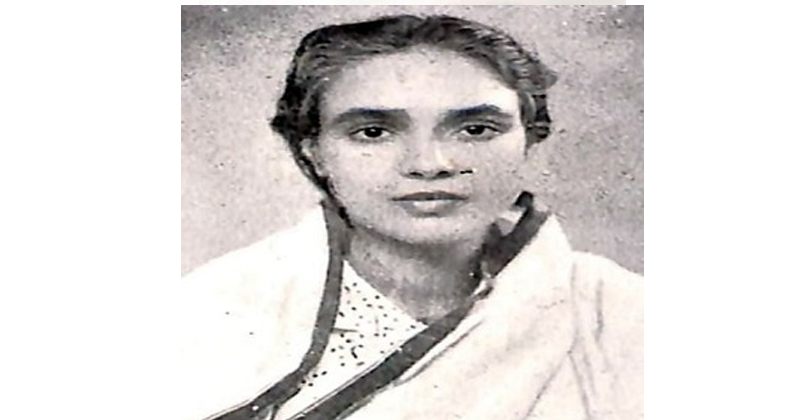
3. Krishna Mehta (Kishtwar)
Krishna Mehta was born on 4 June 1913, in the illustrious Mehta family of Kishtwar. Her great grandfather, Colonel Mehta Basti Ram, was in Maharaja Ranjit Singh’s army helped in the annexation of Ladakh, and later, served as its Governor. Krishna Mehta was married to Duni Chand Mehta, a civil servant of Jammu and Kashmir who was posted as Wazir-e Wazarat (District Commissioner) of Muzaffarabad (a north western district of Jammu and Kashmir) during the time of Pakistan army's invasion on Jammu Kashmir in October 1947.
On the intervening night of 21-22 October 1947, hordes of Pakistani armymen disguised as tribesmen, equipped with modern weapons, under the command of Major Khurshid Anwar, the officer-in-charge of the attack, crossed the border and entered Muzaffarabad and let the loose reign of terror on the civilians and government officials. Houses were looted and plundered and were set on fire. While Krishna Mehta’s husband, Mr. Duni Chand Mehta, the then Wazir-i-Wazarat of the area, was away from his residential quarters repelling the invasion, the marauders reached their home. Krishna Mehta along with her six children had to escape. They wandered from one place to another seeking refuge as they had lost everything – wealth, power, and possession. Eventually, she fell into the hands of the raiders and was kept in jails and in various refugee camps at Muzaffarabad, Domel, Rawalpindi, and Thathyal. These camps were terrible places full of horror where the refugees were treated with callousness as slaughter animals. It was in these camps that Krishna Mehta came to realize the gravity of the situation. She was deeply pained to see the plight of Hindu and Sikh women who were abducted and sold by the raiders. The vulgarity and coarseness were so casual that there was no violent rage or regret. Hunger and starvation were common and people often suffered from cholera and diarrhea, whenever they received rotten, spoiled, and awful rations.
Krishna Mehta herself suffered a lot of torture and trauma. Even after hearing the news of her husband’s revered martyrdom, she pulled herself together as she did not want to die an empty death that had no meaning. She was also persuaded to get settled on the other side of the border. Many times she was provided an easy way to escape by the Pakistani Government officials who knew her husband personally and were considerate but she never accepted these proposals as she didn’t want to prove herself unworthy of her husband.
Undaunted, unbroken in spirit, Krishna rose to every occasion. While staying in the camps, she took upon herself the task of rehabilitating the suffering women and children in the camps. The women in these camps were forcibly converted to Islam and used to live under the shadow of a strange terror of being ostracized anytime. Many of these women committed suicide by drowning themselves. Krishna Mehta felt pierced to see their deplorable condition and the level of destitution they were living in. She took it as her moral duty to save them and promised herself to do whatever she could to bring these broken women back to their normal life. By organizing rhythmic chanting of morning and evening prayers in the camps, she tried to give vent to their stifling grief and release their mind of the oppressed and burdened memories. However, she had to bear the wrath of the local Muslims. Her strong conviction to bring the Hindu and Sikh women out of the haunting terror of the raiders and infusing in them a strength of self-assurance often raged them. Many times she was threatened with dire consequences. Even amidst such appalling suffering and dangers, Krishna Mehta held her head high and did not give up on her fate. It was because of her tireless efforts that the condition of the women in the camps improved. Being from a highly revered family of the time and the wife of Wazir-e-Wazarat of Muzafarrabad, Krishna’s presence in the camp proved a blessing for the tortured women. It was by dint of her tireless efforts and charismatic personality that she could motivate and bring many young girls, women, men, and children back to India along with her.
After arriving in India, Krishna Mehta was kept at the Kurukshetra refugee camp for some days. It was here in this camp that her meeting with Pt. Nehru, the then Prime Minister of India, became a turning point in her life. Despite the trauma through which Krishna Mehta had herself gone, her tremendous willpower, her determination to the human cause, and her dedication to work for the welfare of society impressed Pandit Nehru so much so that he took her to New Delhi where she began to be treated as one of the members of Nehru family.
She made it her mission to ameliorate the condition of those women whom she had left behind in miserable conditions in refugee camps and furiously consumed herself to achieve this greater purpose. She remained instrumental in establishing two organizations in Kashmir-one was Gandhi Sewa Sadan and the other was Khadi Gram Udyog Sangh - which was launched in May 1948 when she accompanied Nehru during his visit to Kashmir. These institutions worked for training the refugee women of Kashmir in vocational crafts which provided livelihood to thousands of families. Within six months the institution made rapid strides and three more branches were opened in Baramulla, Habbakadal, and Chhati padshahi. The focus was on the socio-economic development of the disadvantaged refugee women of the J&K region.
Realizing the fact that social transformation requires a collaborated and coordinated action of multiple fields, she entered active politics and was nominated to Rajya Sabha as the first woman MP from the state of Jammu and Kashmir. Her political life became a means to achieve a more practical end of her life. She breathed her last on October 20, 1993, and as per her wishes, her ashes were immersed in the river Chaderbhaga, in her hometown, Kishtwar.
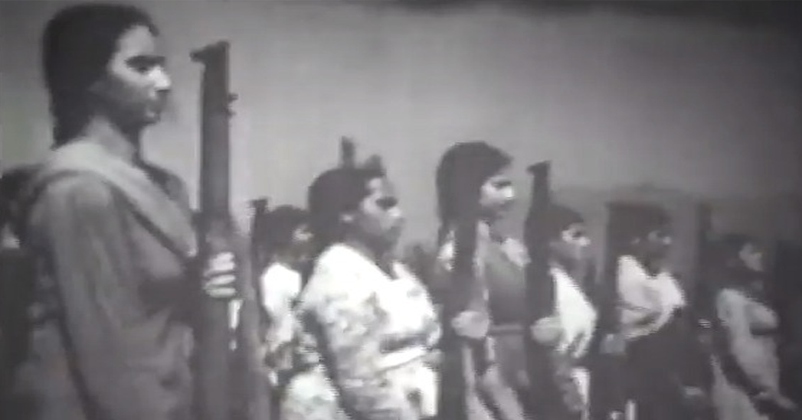
4. Shalo Singh (Mirpur)
Shalo Singh was born in the small village of Batala, in district Mirpur, now in Pakistan-occupied Jammu and Kashmir (POJK). Before joining the Indian National Army in Malaya, he was a soldier in the 5/14 Punjab regiment of the British Indian Army and had to fight for the allied forces during World War II. However, in Japan’s Singapore and Malaya campaigns, many Indian prisoners of war were captured. Thus, Shalo Singh also became a prisoner of war. However, Japan’s reluctance in holding any prisoner of war and assistance in forming the Indian National Army to wrest India’s freedom from British rule changed the whole scenario. Furthermore, the effective persuasion by the revolutionaries like Rash Behari Bose and Mohan Singh and the electrified speech given by Subhash Chander Bose to fight for the nationalist cause, Shalo Singh like many other soldiers who were fighting for allied forces, gave up his earlier service and swayed his loyalty to the Indian National Army.
He voluntarily joined the second infantry battalion of the INA as a sepoy. As the INA leadership considered Burma and Malaya as springboards to march toward India and drive out the British forces, a number of soldiers were deputed to the India-Burma front. Shalo Singh also fought on the Burma front against the allied forces. However, owing to unfavorable weather conditions caused by heavy monsoon rains accompanied by the absence of timely logistical support, the Indian National Army could not make any further advance. Moreover, the washing away of the unmetalled track due to torrential rains made the withdrawal all the more difficult. While retreating, the INA had to face a number of casualties in which Shalo Singh also got martyred in action on the battlefield in 1944.